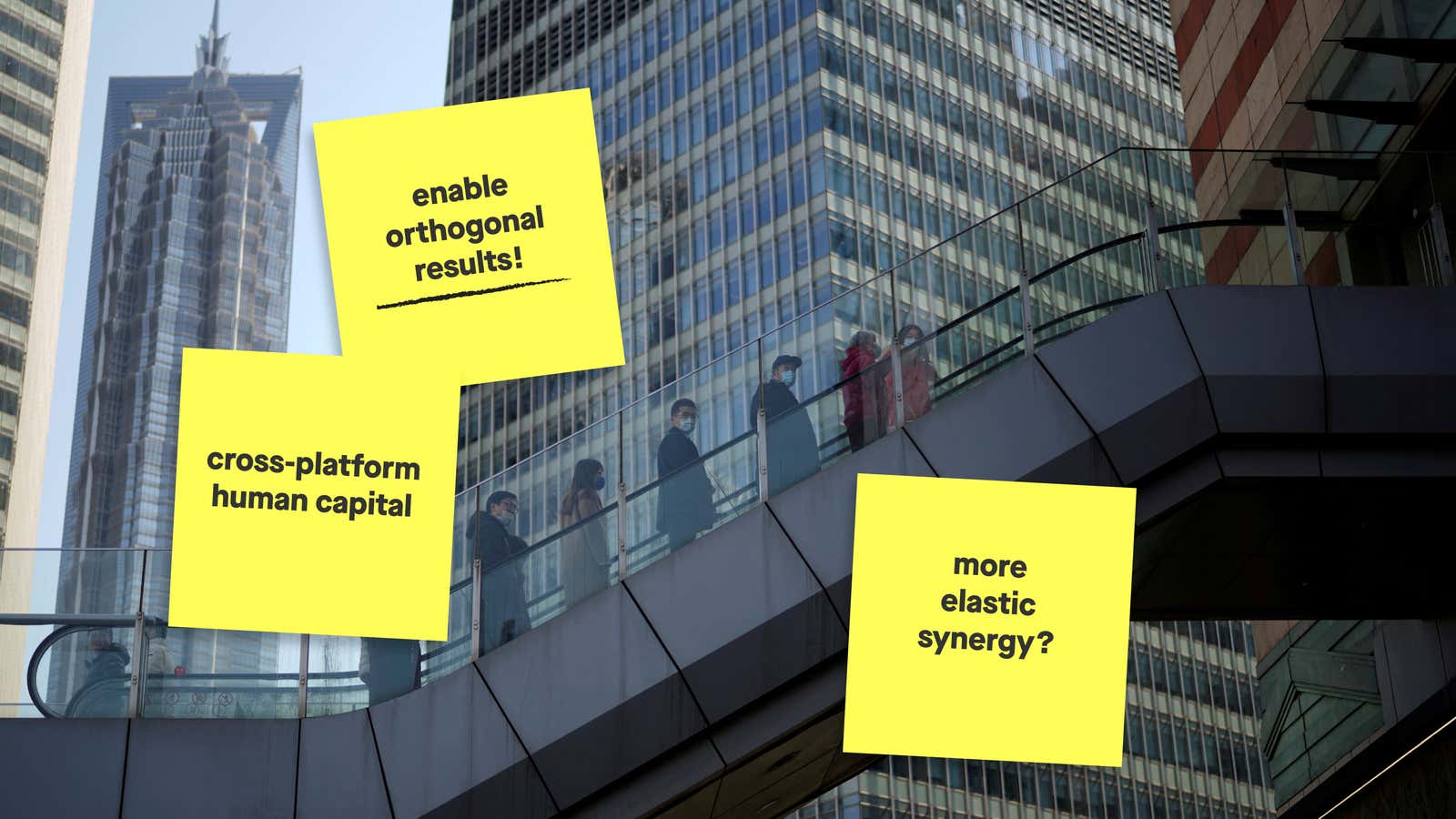A growing field of academia is trying to suss out how bullshit adversely affects the workplace, and if there’s anything to be done about it.
Bullshit, as you probably know, is a form of misrepresentation, and it’s different than lying. Liars know they’re telling a fib; whereas bullshitters don’t care about whether their statements are true or not. And yes, bullshit is the technical term.
“Bullshitters have this freedom where they can just make stuff up,” explains Ian McCarthy, a researcher of bullshit at Simon Fraser University. “And sometimes they’re correct!”
How well can you detect bullshit?
Research into bullshit suggests some people are more susceptible to it than others. Last month, a study discovered that those most vulnerable to financial bullshit (impressive verbal assertions about finance that are actually meaningless) are more likely to be young, male, have a higher income, and to be overconfident in their own financial knowledge.
Can you tell profound financial statements from those that just appear profound? In the exercise below we’ve put some of the statements from the financial bullshit study on sticky notes. Order them from the most bullshitty to the least:
Understanding workplace bullshit
Bullshit is everywhere and takes many forms, but in workplaces it’s often evidenced by acronyms, communication lacking information, and excessive jargon. McCarthy and his team have sought to explore and understand the role of corporate bullshit, and how to deal with it.
“To what extent is it bad? Well, we truly don’t have any evidence to know whether it’s bad, or not. We have hunches and opinions,” says McCarthy. In 2020, his team published a scale to measure bullshit in the workplace.
Some companies are now using the scale as part of their internal employee surveys. As corporations feed this data back to him, McCarthy hopes to empirically determine to what extent the level of perceived bullshit is a factor in employee engagement and satisfaction.
Confronting bullshit at work
Despite the current lack of data showing corporate bullshit impedes work or company’s bottom lines, academics in the field have a strong hunch that it’s harmful to most businesses.
McCarthy and his colleagues developed a schema for dealing with workplace bullshit. Academics studying bullshit tend to be a bit tongue-in-cheek, but the framework is sincere. It’s called the CRAP framework. Bullshit in the workplace can lower employee’s job satisfaction, increase distrust in leadership, and result in lower performance.
Why should businesses care whether or not they’re fostering an environment where bullshit thrives?
“Each of those four things [in the ‘act’ section of the framework]—exit, confront, support, or disengage—they all have consequences on how the firm behaves and operates,” explains McCarthy.
Preventing a negative culture of bullshit often requires work at the top of the organization.
“A lot of this rests at the feet of leaders, because they may actually be the problem as well,” says McCarthy. Some of the most effective things they can do are cut back on acronyms and jargon, and foster a workplace where employees feel safe enough to say “I don’t know”.
